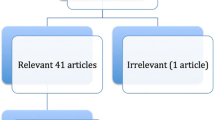Abstract
A cephalocele is defined as a herniation of cranial contents through a defect in the skull. Cephaloceles are classified according to their contents and location. We have reviewed a total of 112 patients with cephaloceles, 51 of whom had sincipital meningoencephaloceles (fronto-ethmoidal meningoencephaloceles). This group is distinctive in its demographic distribution, in the effect on growth of other facial structures, and in the combined craniofacial approach needed to treat them. This review is based on the sincipital encephaloceles with the other cephaloceles included for completeness. Despite many theories, the cause of congenital cephalocele is not known. Preoperative work-up includes 3-dimensional computed tomography scan of the facial skeleton, and surgical management is multidisciplinary in nature. The aim is to remove the lesion before the deformity has time to greatly distort facial growth, which appears to realign itself after surgery. The 50 patients who underwent surgery for fronto-ethmoidal encephalocele all survived with minimal complications.
Résumé
Les encéphalocèles se définissent comme des hernies du contenu de la boite crânienne à travers un défect du crâne. On les classe selon leur contenu et selon l'endroit où elles se produisent. Nous avons passé en revue un total de 112 patients présentant une encéphalocèle dont 51 présentaient des méningo-encéphalocèles sincipitales (méningoencéphalocèles fronto-ethmoÏdales). Ce groupe se caractérise par sa répartition démographique, son effet sur la croissance des autres structures de la face et son approche opératoire craniofaciale combinée. Cet article est centré sur les encéphalocèles sincipitales. Malgré le grand nombre de théories proposées, la cause des encéphalocèles congénitales reste inconnue. Le bilan préoératoire nécessite la tomodensitométrie en trois dimensions du squelette de la face; le traitement chirurgical est multidisciplinaire. Le but de cette chirurgie est d'enlever la lésion avant que la malformation ait eu le temps de perturber la croissance de la face; celle-ci se corrige après la chirurgie. Les 50 patients qui ont subi cette chirurgie ont tous survécu avec un minimum de complications.
Resumen
Se define el cefalocele como una herniación del contenido a través de un defecto en el cráneo. Los cefaloceles son clasificados de acuerdo a su contenido y a su ubicación. Hemos revisado un total de 112 pacientes con cefaloceles, 51 de los cuales presentaban meningoencefaloceles sincipitales (meningoencefaloceles frontoetmoidales). Este grupo se distingue en cuanto a su distribución demográfica, al efecto sobre el crecimiento de otras estructuras faciales, y al abordaje cráneofacial combinado que debe emplearse en su tratamiento. La revisión se basa en los encefaloceles sincipitales; el resto de los encefaloceles ha sido incluido con miras a una revisión más comprensiva. A pesar de la existencia de diversas teorías, la causa del encefalocele congénito es desconocida. La valoración preoperatoria incluye la escanografía tridimensional computadorizada del esqueleto facial; el manejo quirÚrgico es de naturaleza interdisciplinaria. El propósito es la remoción de la lesión antes de que la deformidad tenga tiempo de distorsionar grandemente el crecimiento facial, el cual parece realinearse después de la cirugía. Los 50 pacientes que fueron sometidos a cirugía por encefalocele frontoetmoidal sobrevivieron todos con mínimas complicaciones.
Similar content being viewed by others
References
McLaurin, R.L.: Cranium bifidum and cranial cephaloceles. In Handbook of Clinical Neurology, P.J. Vinken, G.W. Bruyn, editors, vol. 30. ch. 7, Congenital malformations of the brain and skull, Part I, Amsterdam. North-Holland Publishing Co., 1977, pp. 209–218
Spring, A.: Monographie de la hernie du cerveau et de quelques lesions voisines. Memoires de L'Academie Royale de Medecine de Belgique, 1954
LeDran, H.F.: Observations in Surgery, London, James Hodges, 1740
Matson, D.D.: Neurosurgery of Infancy and Childhood, Springfield. Charles C. Thomas, 1969, pp. 61–75
David, D.J.: New perspectives in the management of cranio-facial deformity. Ann. R. Coll. Surg. Engl.66:270, 1984
David, D.J., Sheffield, L., Simpson, D., White, J.: Fronto-ethmoidal meningoencephaloceles: Morphology and treatment. Br. J. Plast. Surg.37:271, 1984
David, D.J., Simpson, D.A.: Fronto-ethmoidal meningoencephaloceles. Clin. Plast. Surg.14:83, 1987
Simpson, D.A., David, D.J., White, J.: Cephaloceles: Treatment, outcome and antenatal diagnosis. Neurosurgery15:14, 1984
David, D.J., Simpson. D.A., Cooter, R.D.: Meningoencephaloceles: Classification and management. In Advances in Plastic and Reconstructive Surgery, vol. 5, Chicago, Year Book Medical Publishers (in press)
Hemmy, D.C., David, D.J.: Skeletal morphology of anterior encephaloceles defined through the use of three-dimensional reconstruction of computed tomography. Pediatr. Neurosci.12:18, 1986
Suwanwela, C., Suwanwela, N.: A morphological classification of sincipital encephaloceles. J. Neurosurg.36:201, 1972
von Meyer, E.: Uber Basale Hirnhernie In Der Gegend Der Lamina Cibrosa. Virchows Archiv. (Pathologische Anatomie)120:309, 1890
Tessier, P.: Anatomical classification of facial, craniofacial and latero-facial clefts. J. Maxillofac. Surg.4:69, 1976
Mazzola, R.A.: Congenital malformations in the frontonasal area: Their pathogenesis and classification. Clin. Plast. Surg.3:573, 1976
Gerhardt, H.-J., Muhler, G., Szdzuy, D., Biedermann, F.: Zur Therapie Problematik bei Sphenodthmoidalen Maningozelen. Zentralbl. Neurochir.40:85, 1979
Barrow, N., Simpson, D.A.: Cranium bifidum: Investigation, prognosis and management. Aust. Paediatr. J.2:20, 1966
Suwanwela, C: Geographical distribution of fronto-ethmoidal encephaloceles. Br. J. Preventative Med.26:193, 1972
Thu, H., Kyu, H.: Epidemiology of fronto-ethmoidal encephalomeningocele in Burma. J. Epidemiol. Community Health38:89, 1984
Hemmy, D.C., David, D.J., Herman, G.T.: Three-dimensional reconstruction of cranial deformity using computed tomography. Neurosurgery13:534. 1983
Naim-ur-Rahman: Nasal encephalocele: Treatment by transcranial operation. J. Neurol. Sci.42:73, 1979
Jackson, I.T., Tanner, N.S., Hide, T.A.: Frontonasal encephalocele—“long nose hypertelorism.“ Ann. Plast. Surg.11:490, 1983
Author information
Authors and Affiliations
Rights and permissions
About this article
Cite this article
David, D.J., Proudman, T.W. Cephaloceles: Classification, pathology, and management. World J. Surg. 13, 349–357 (1989). https://doi.org/10.1007/BF01660747
Issue Date:
DOI: https://doi.org/10.1007/BF01660747




